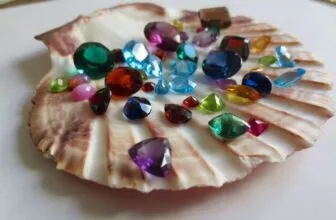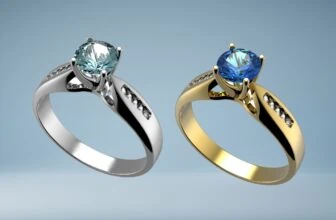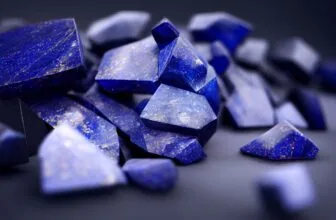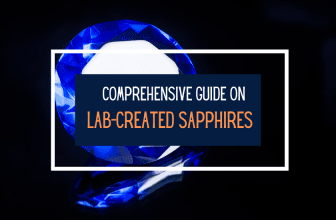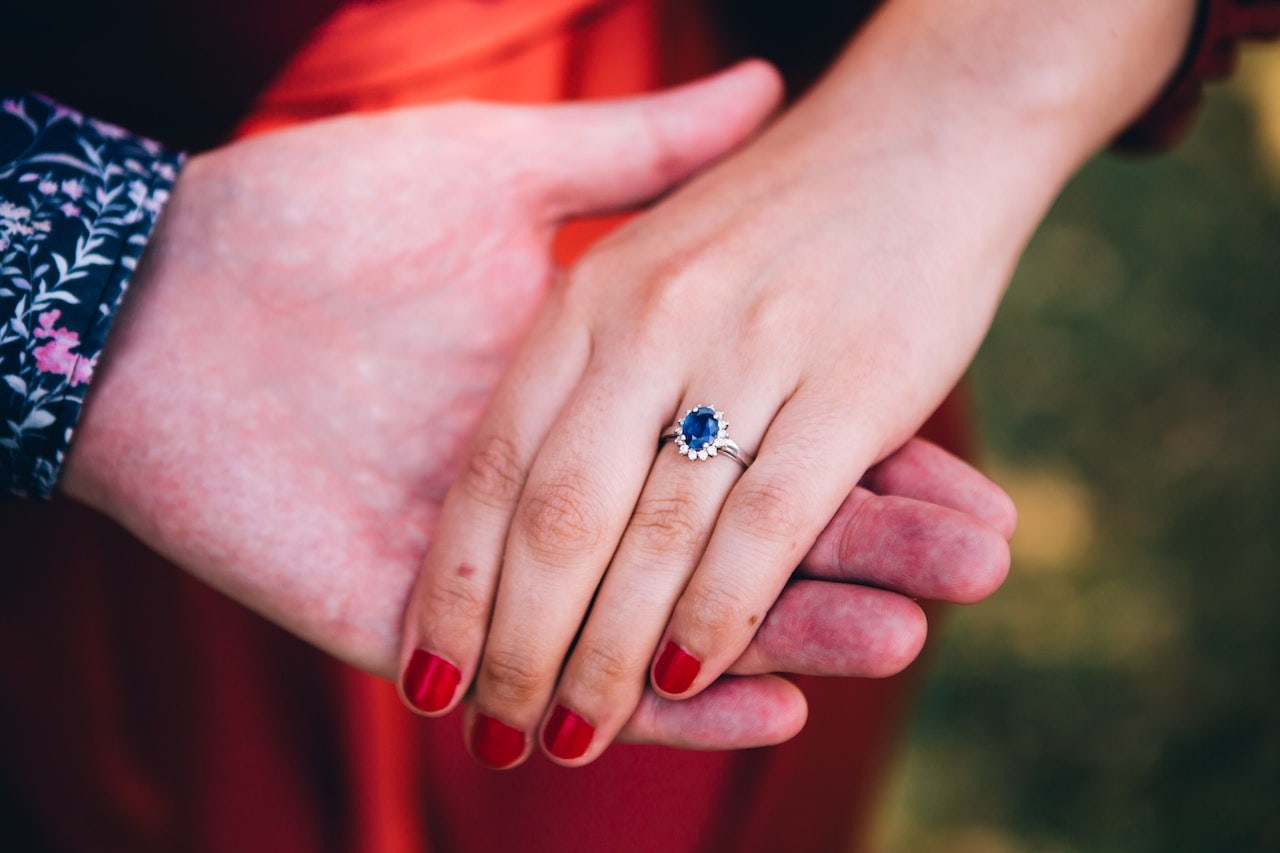
Table of Contents
A beautiful, rare, and affordable gemstone, high-quality tanzanite stones can be as beautiful as blue sapphires but at a much lower price point.
But finding the right tanzanite can be difficult. There’s a lot of contradictory information online about how to choose tanzanite, which can be confusing.
So, in this guide, let’s focus on the basics and what you need to know when it comes to the picking the best tanzanite for your money.
Bottom Line: Tanzanite is rare yet affordable. It has a blue-violet color, but blue dominant varieties are more valuable. Larger stones are more saturated and have vivid colors. Look for evenly saturated tanzanite with no visible inclusions. We recommend searching Blue Nile and Angara for high-quality, tanzanite jewelry at competitive prices.
What is Tanzanite?
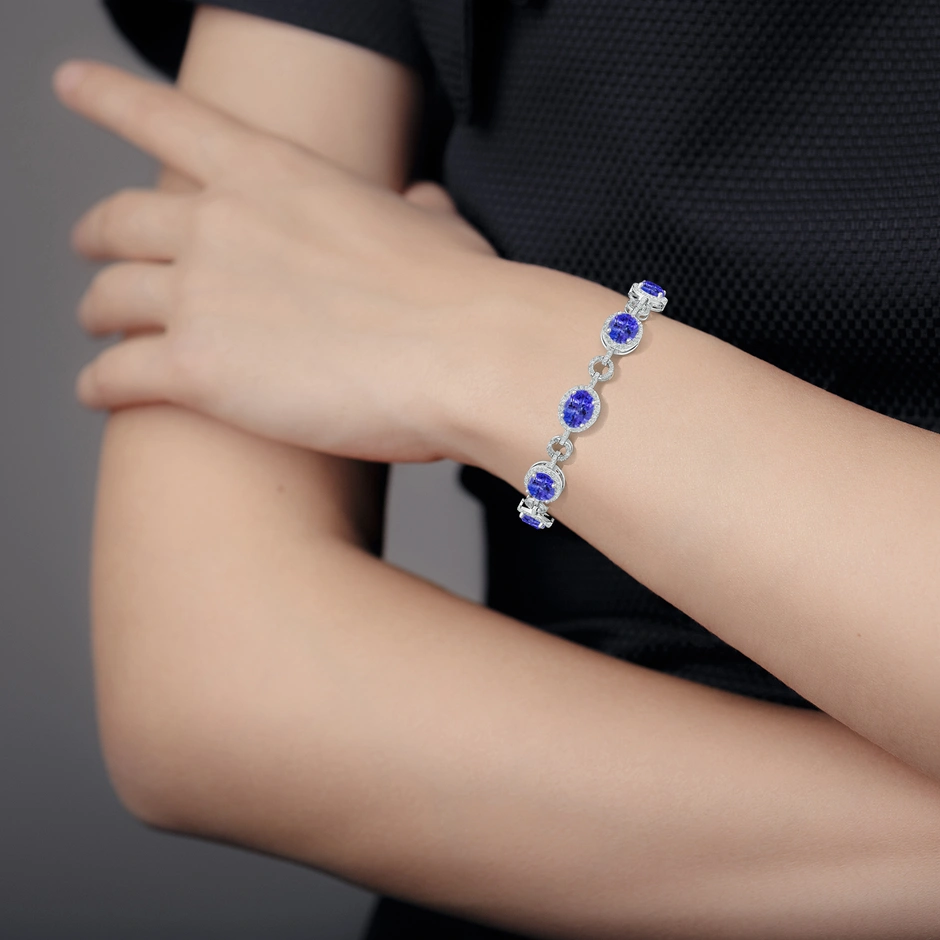
The first thing to know about tanzanite is that it’s extremely rare. Tanzanite was discovered in the 1960s and given its name by Tiffany & Co. They called it the most beautiful stone discovered in the last 2000 years.
All tanzanite on the market comes from one tiny mine in Tanzania (from where it gets its name), located at the foot of Mt. Kilimanjaro.
The intense heat and pressure of the tectonic activity that created Mt. Kilimanjaro may be responsible for creating tanzanite. Because the supply of this gemstone is so limited, experts believe that tanzanite will run out in a few more years.
Tanzanite is made of the mineral zoisite. It’s a “geological phenomenon” and the chances that another mine will be found are about a million to one! This generation of shoppers will be the last who will be able to purchase tanzanite from the primary market.
How to Choose Tanzanite: The 4Cs
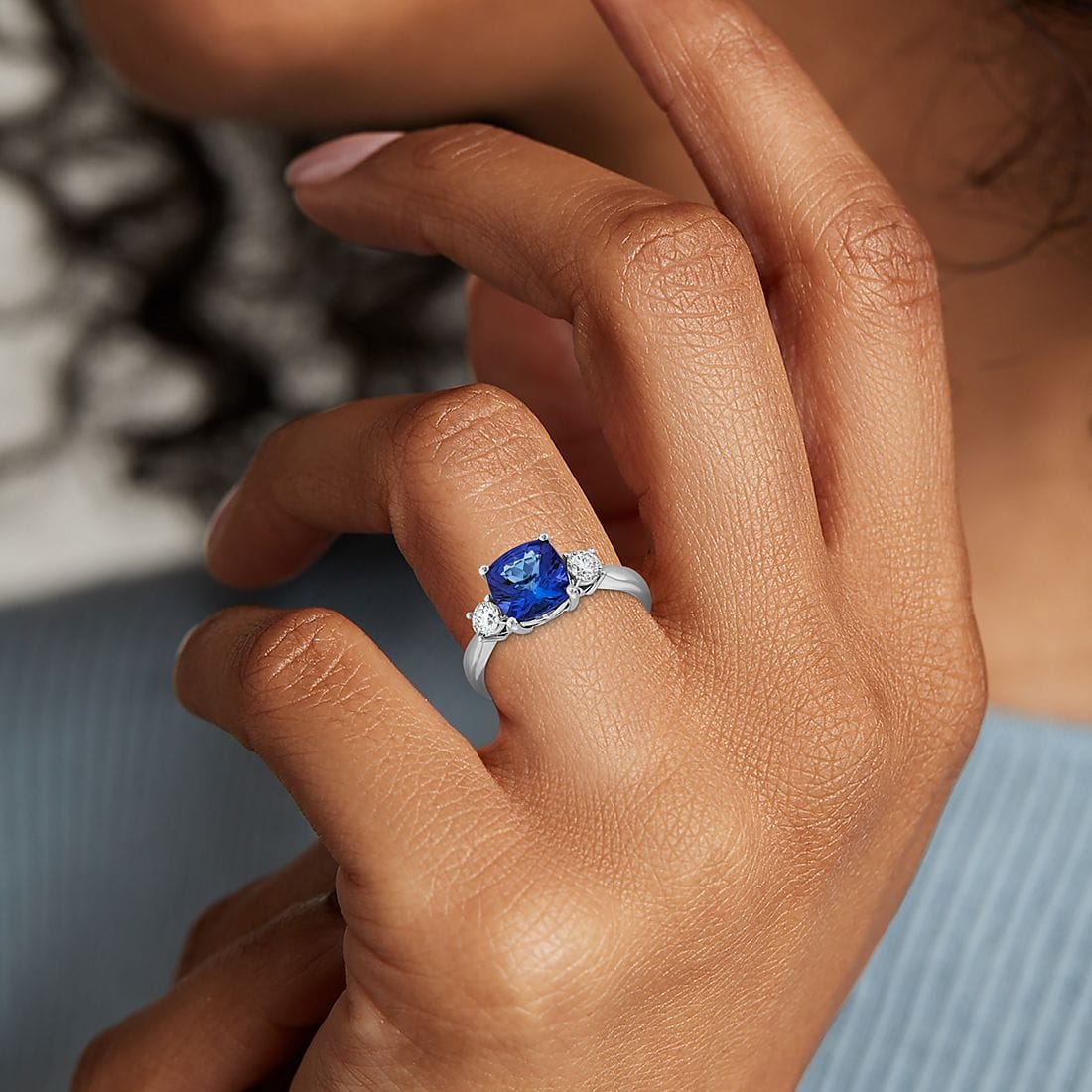
As with most gemstones, tanzanite is also evaluated by the 4cs – cut, color, clarity, and carat. From these, color is the most important, so let’s start with that.
1. Tanzanite Color
In its raw form, tanzanite contains three colors, which means it is trichroic. These colors are brown, violet, and blue. As tanzanite is heated, whether underground by natural metamorphic occurrences or in a furnace, it becomes dichroic, meaning it exhibits two colors at the same time – blue and violet.
- If the blue is dominant, the tanzanite is labeled vB (violet-BLUE)
- If the violet is dominant, the tanzanite is labeled bV (blue-VIOLET)
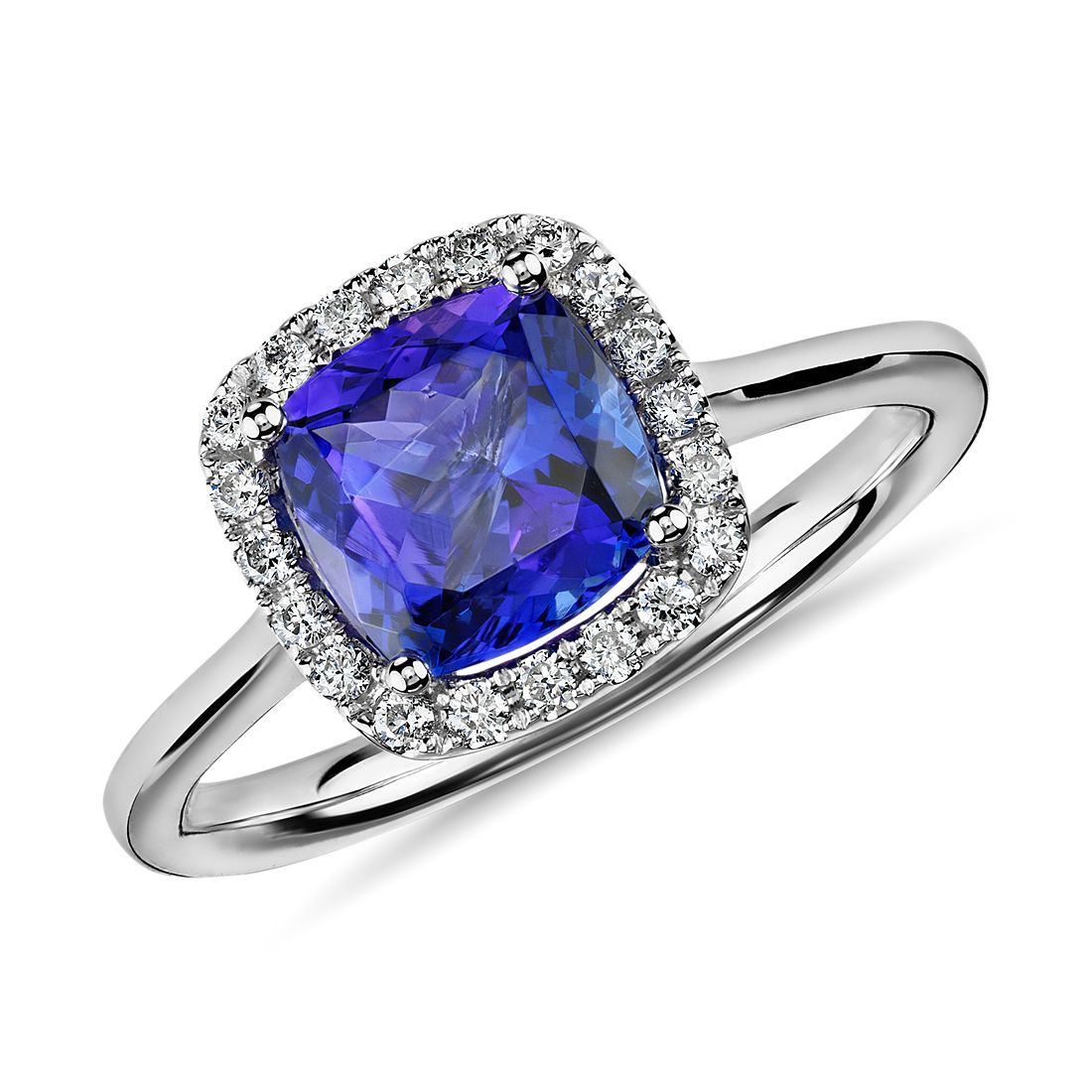
All tanzanite consists of a blend of blue and purple, depending on the angle you view it from. It can be hard to accurately judge a tanzanite’s color, especially from images and videos online. What’s more, there isn’t a standardized grading system for tanzanite color. So, when selecting tanzanite, it’s best to keep these points in mind:
- Darker, more saturated tanzanite stones are more expensive and sought after than lighter tanzanite.
- Tanzanite with a dominant blue color looks similar to blue sapphire and is typically more sought after.
- Blue dominant tanzanite is rarer.
- Smaller tanzanite stones tend to be lighter in color, like these earring studs. Larger stones over 2-3 carats in size tend to be saturated and vivid in color, like this stunning ring.
- All tanzanite, whether blue or purple dominant, is about the same price.
How Does Light Impact Tanzanite Color?
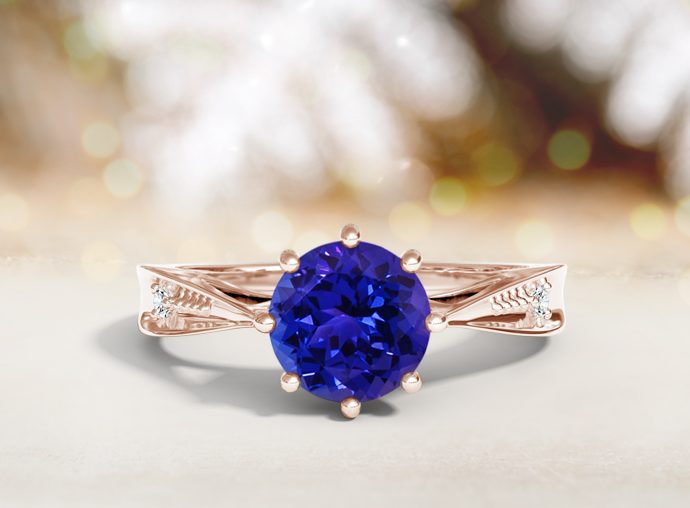
Lighting plays a big role in the color of tanzanite. Under natural light, your stone will often possess a more dominant blue color. Under artificial light, the very same stone can show off more of a violet color. This is typical of tanzanite and is due to its unique crystalline structure. Because of this, it’s a good idea to view tanzanite under different sources of light prior to making a purchase.
How Important is Tanzanite Color Saturation?
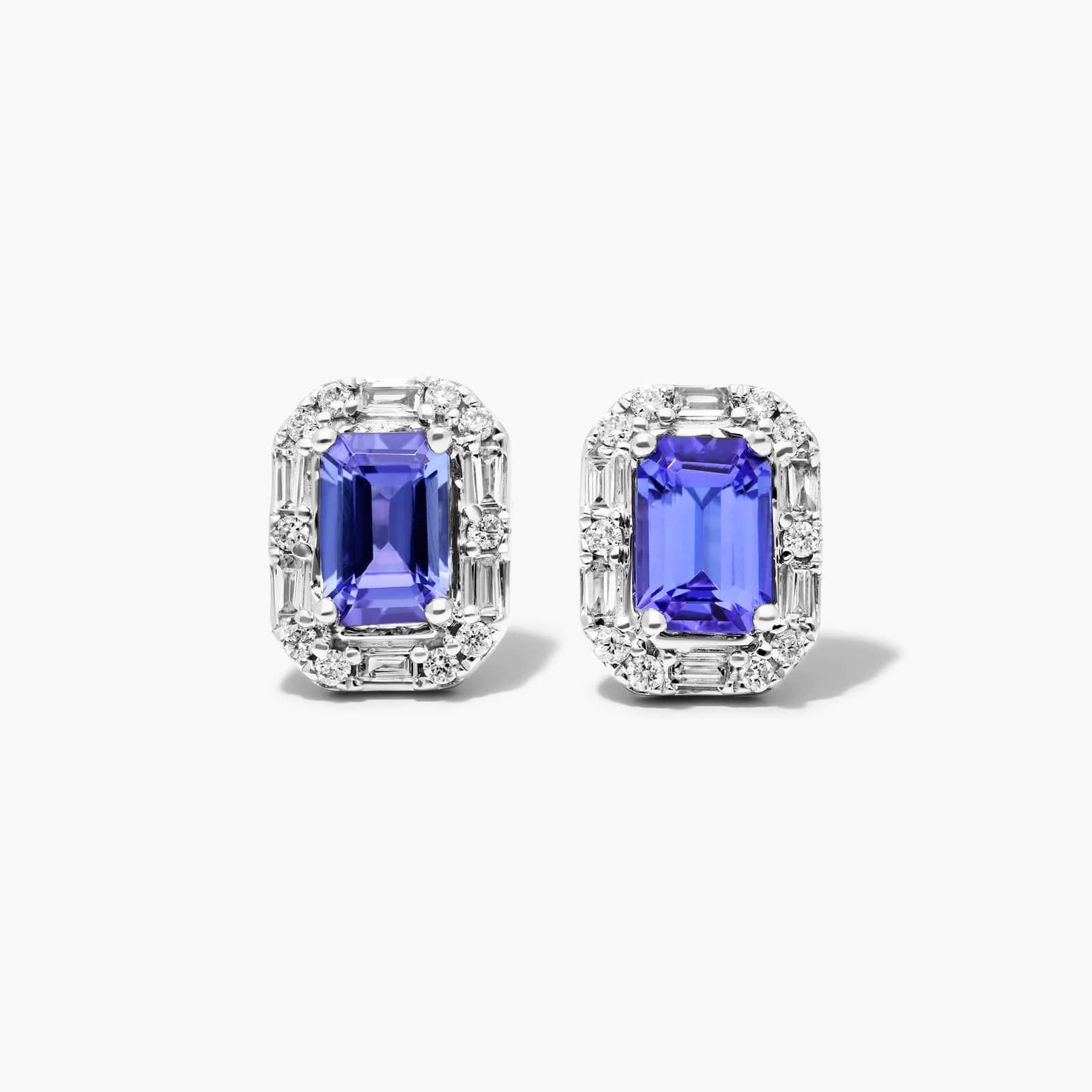
Saturation refers to how intense the tanzanite color is.
- Low saturation = nearly clear with a slight tinge of color
- High saturation = vibrant and deep color
Typically, the larger the stone, the richer the color and the higher the saturation. Smaller stones will possess a pastel color with lower saturation. Tanzanite will often have a saturation resting right in the middle and tending towards a higher saturation.
Consider your preference when deciding between larger, darker stones or smaller, lighter ones. There’s no right or wrong answer as to which is better.
2. Tanzanite Cut
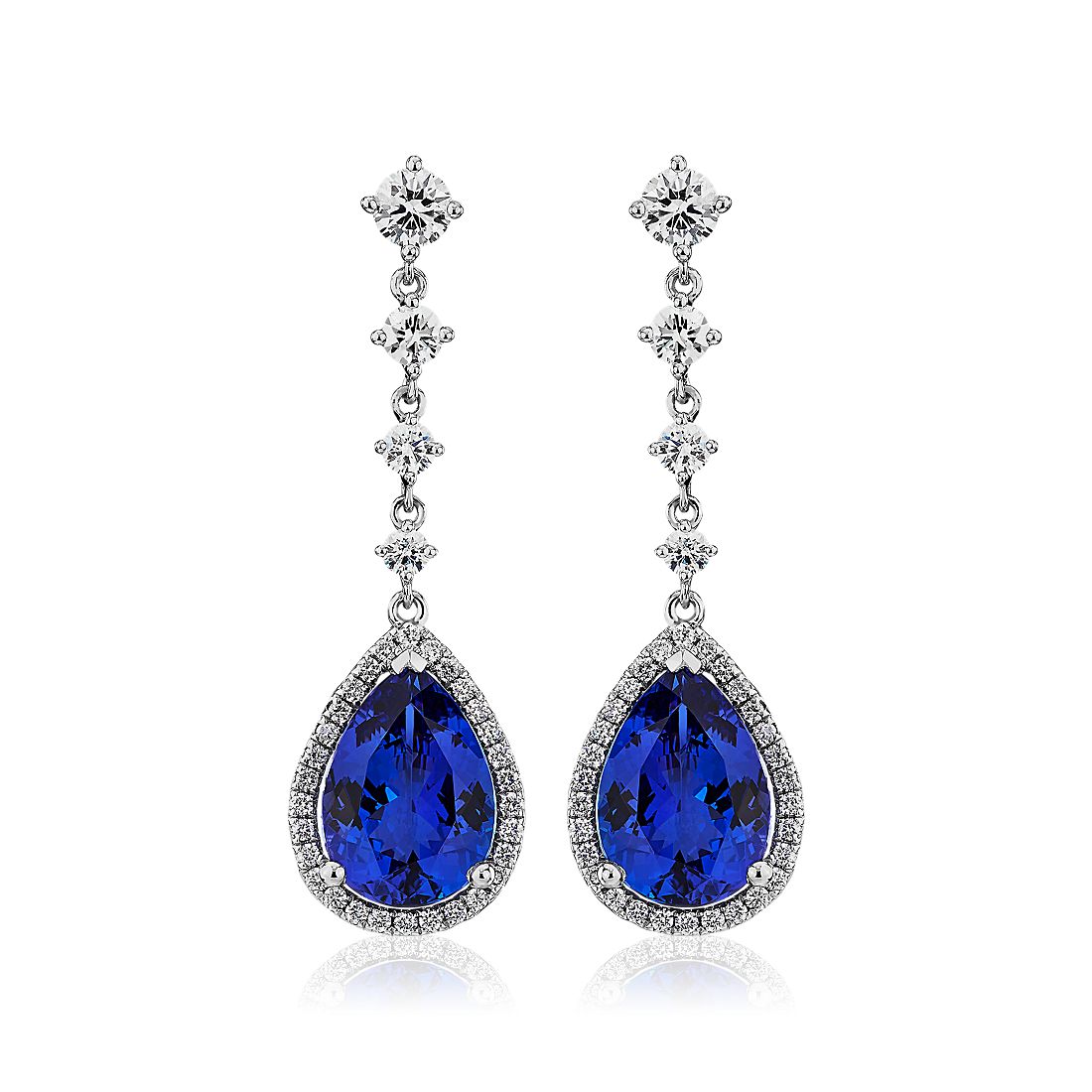
The cut of tanzanite is important because it enhances the stone’s brilliance and makes the color pop.
However, there isn’t a perfect cut for tanzanite as it depends on the individual stone. Cutters will consider the colors of the stone and how to enhance these.
Achieving a violet dominant color wastes less of the tanzanite rough while bringing out the blue in the stone results in more wastage. This is why blue tanzanite is rarer and generally more valuable.
Tanzanite can be cut into all the usual gemstone shapes. Check for these factors when deciding on tanzanite cut:
- Check for symmetry, as this highlights brilliance and light reflection.
- Ideal tanzanite should have even saturation. Check for light or dark patches on the stone.
- Shallow-cut tanzanite can display a window effect that impacts its beauty.
3. Tanzanite Clarity
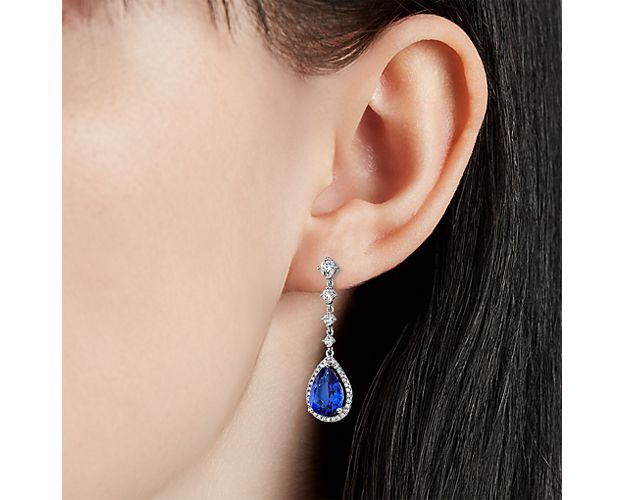
Tanzanite is graded by the GIA as a Type 1 gemstone, meaning that it’s typically flawless to the naked eye. However, some specimens can be heavily included. The more flawless the stone, the higher its value and beauty.
The clarity of tanzanite is graded on whether or not the stone is eye clean. This means that if there are no inclusions visible to the naked eye, the stone will be graded flawless. Pure, inclusion-free stones are rarer and will oftentimes be more expensive.
Look for inclusions and where they are located. With tanzanite, visible inclusions will appear as small blemishes residing inside the stone. Obviously, the most desirable stone will have no visible inclusions.
4. Tanzanite Carat Size
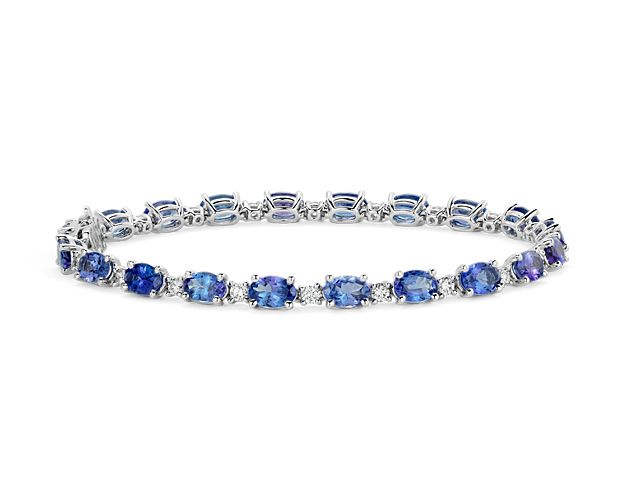
Carat refers to the weight of any given gemstone. For tanzanite, face-up measurements are the best way to measure the size of the stone.
While carat weight may not affect the cut or color of your stone, it will definitely affect the cost. All things being equal, larger stones will be more expensive than smaller pieces.
As we’ve already mentioned, larger stones are also more saturated and vivid in color, whereas smaller ones are paler and less desirable.
Synthetic or Imitation Tanzanite
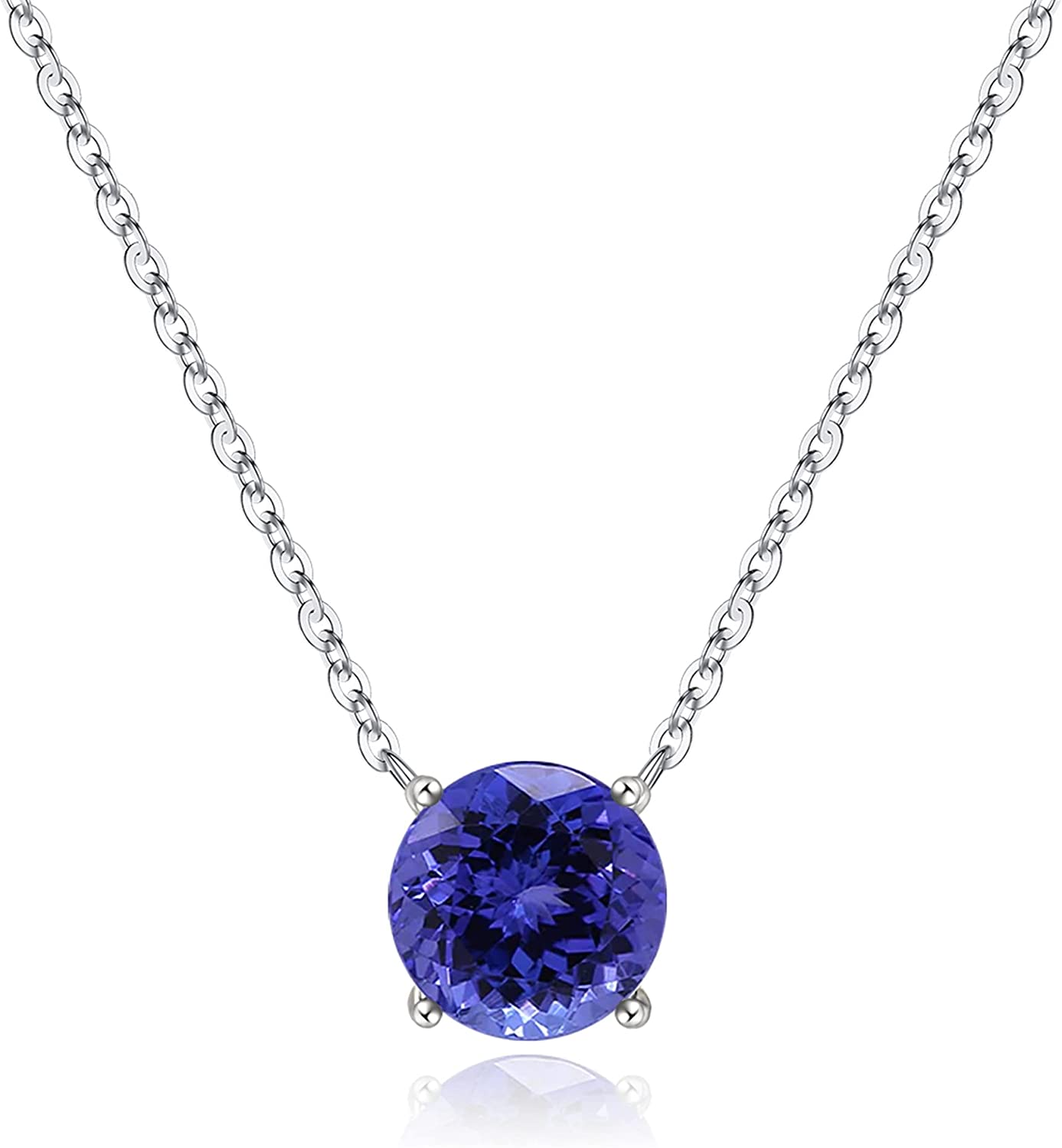
Tanzanite has not yet been successfully synthesized, which means that you can be sure the tanzanite you buy on the market is natural. When we say synthetic tanzanite, we are talking of lab-created/man-made tanzanite that has the same chemical and optical properties as mined tanzanite.
However, there are many imitations to be aware of.
- Synthetic forsterite looks similar to lower and medium grades of tanzanite and is often sold as tanzanite. Check for the birefringence (double refraction) of the stone by holding it up to the light and observing the facets. If these appear doubled up, it is highly likely that the stone is forsterite. Tanzanite does not display double refraction as its birefringence is low. You can also use a cheap jeweler’s loupe for this test.
- Synthetic blue corundum, also known as lab-created sapphire, looks like tanzanite and can be passed for it.
- Blue glass is also used as a tanzanite imitation.
- Sometimes tanzanite is the imitator! Some retailers may try to pass off tanzanite as the much more valuable blue sapphire. However, tanzanite will always have traces of violet, whereas sapphire does not.
Another thing to be aware of is certain treatments that some retailers do to bump up the price of tanzanite. Sometimes, lower-grade tanzanite is coated with cobalt to enhance and deepen the stone’s color. You will end up paying a premium for a stone that is not worth as much.
Tanzanite Jewelry
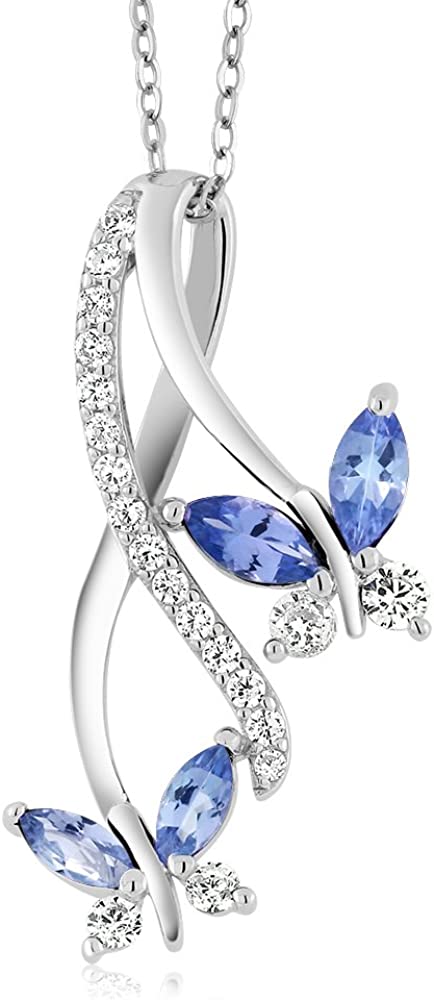
While tanzanite is a beautiful gemstone for any type of jewelry, note that it only ranks 6 to 7 on the Mohs scale of hardness. It also has low toughness and can break when struck. While we don’t recommend it for engagement rings, it’s perfect for occasional jewelry, pendants, bracelets and earrings.
Typically, tanzanite will be paired with sterling silver or white gold. These metal colors complement the blueish-violet color of tanzanite. It’s also stunning when paired with sparkling diamonds.
For a more vintage look, tanzanite in yellow or rose gold settings is a great choice. While this is not very common, it makes for a statement look.
How to Keep Tanzanite Clean
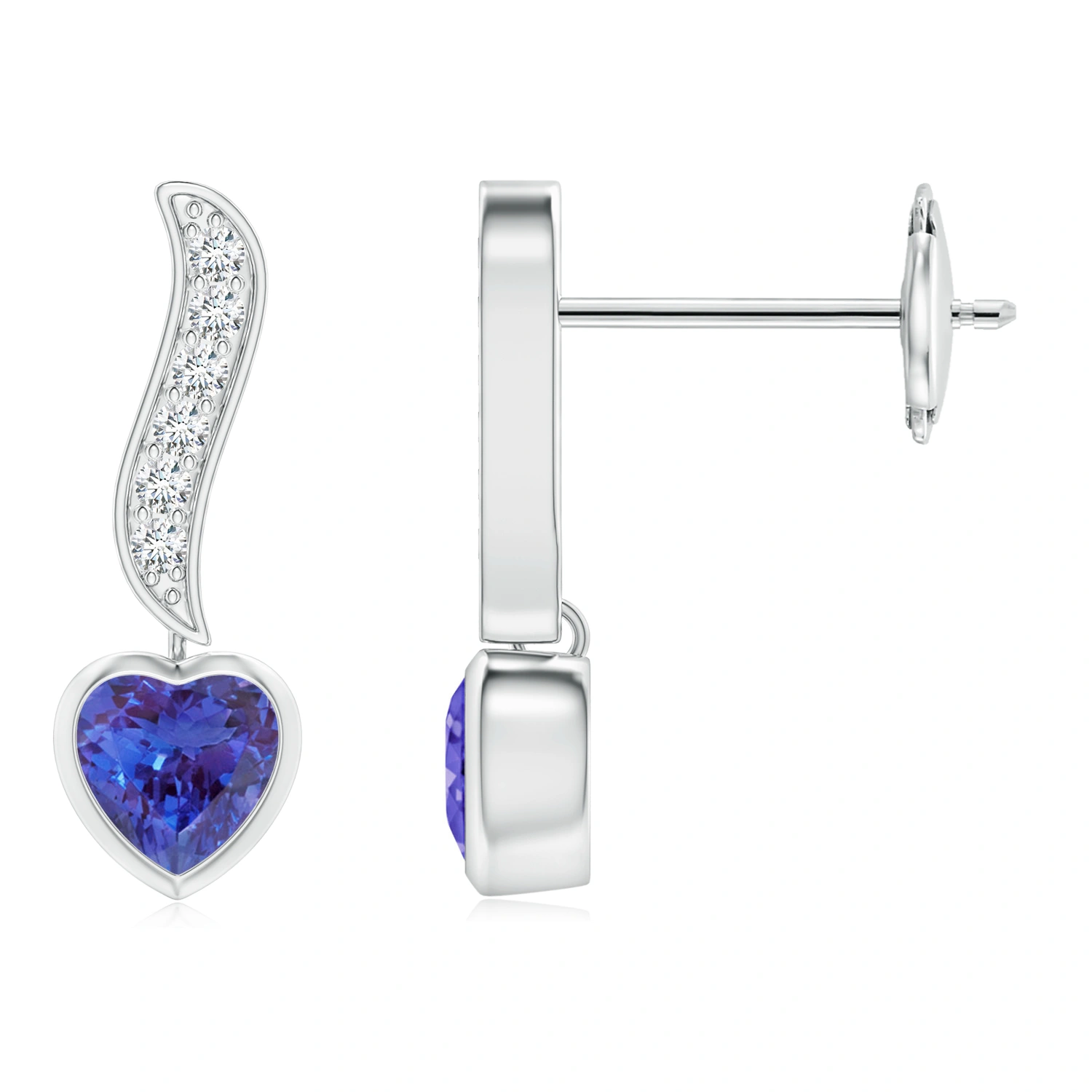
Caring for tanzanite is important to maintaining its value. Because tanzanite isn’t very hard, it can easily be scratched by any harder substance. Here are some basic tips for keeping tanzanite clean and lustrous:
- Store tanzanite separately to prevent being scratched by other gemstones and metals. Look for a jewelry box or cloth pouch.
- Protect tanzanite jewelry from knocks that could cause it to break.
- Keep tanzanite jewelry away from harsh chemicals, such as detergents, bleach and even makeup. Always put tanzanite jewelry on last after applying makeup and perfumes.
- Over time, dirt and grime buildup can cause the stone to appear cloudy and lose its sparkle and luster. Use a soft toothbrush and warm soapy water to gently scrub your stone clean. Rinse your stone and then dry it with a soft cloth.
What is the Meaning of Tanzanite
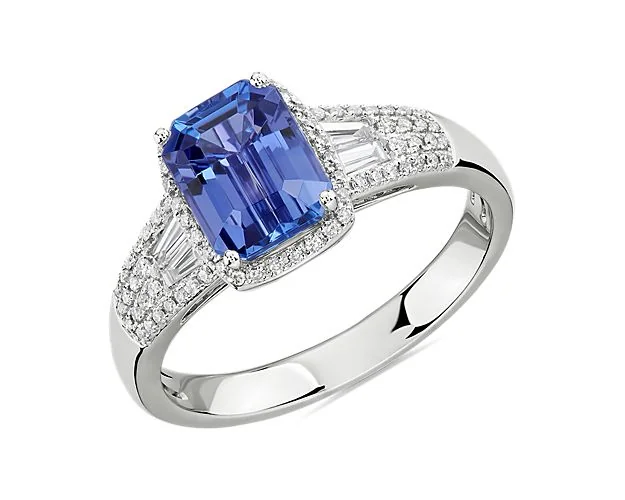
Tanzanite is often called a “stone of magic”. It is believed that it helps the wearer on a quest toward spiritual awareness and insight.
It is also known as the “Workaholics stone” because it increases relaxation and aids the user in slowing down and taking it easy.
This stone can also help relieve stress and depression and often helps to enhance balance, harmony, and peacefulness.
Tanzanite is also believed to be connected to the third eye chakra located directly in the center of the forehead.
Where to Buy Tanzanite Jewelry
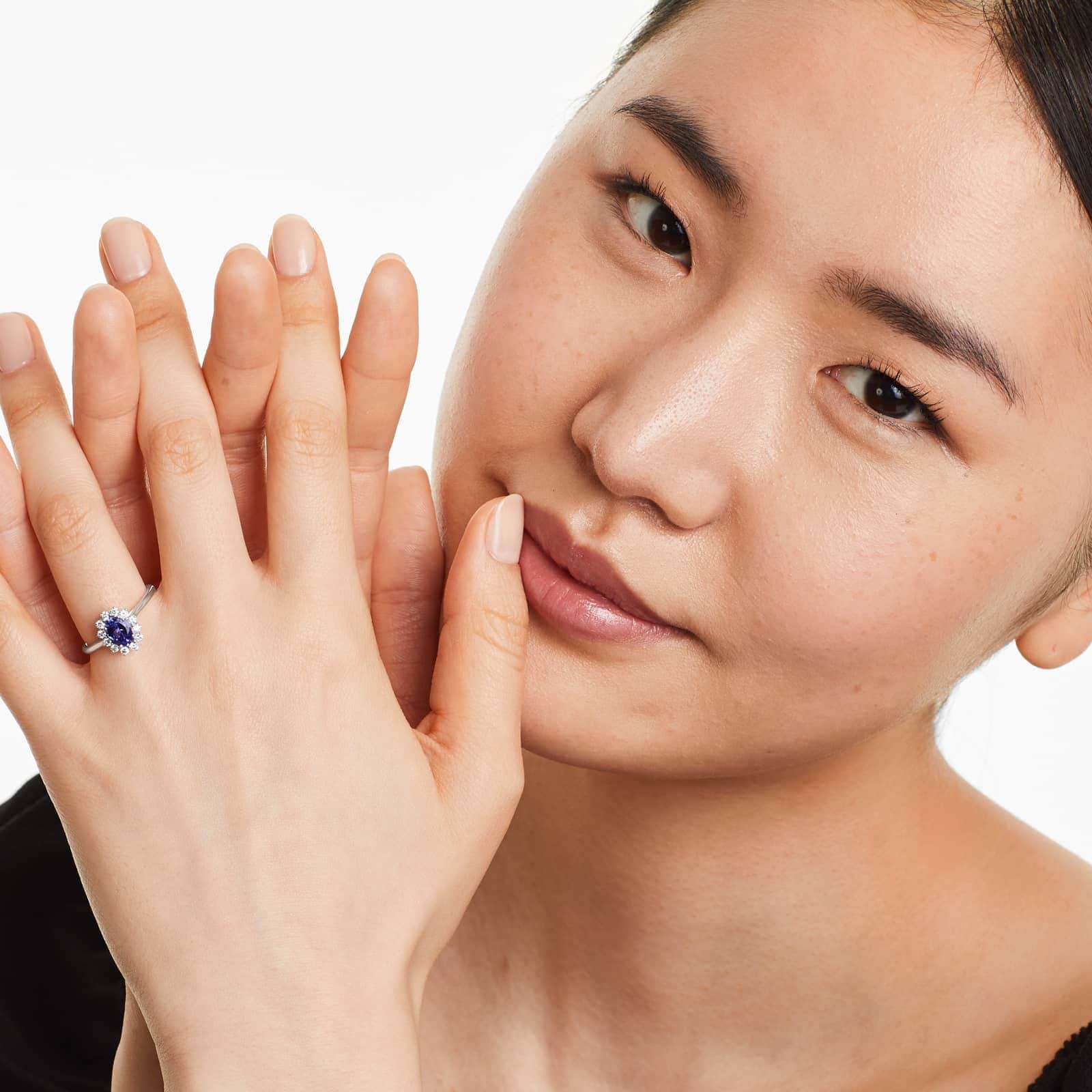
Because tanzanite is a December birthstone, most jewelry retailers have tanzanite jewelry on offer. While shopping in local stores means that you can see the jewelry before you buy it, shopping online gives you more options, competitive prices, and more designs. We recommend the following retailers to begin your tanzanite search:
1. Blue Nile
Although primarily a diamond retailer, Blue Nile carries a small but exclusive collection of tanzanite jewelry. These start from as low as $400. Blue Nile is known for their quality craftsmanship, stylish designs, competitive pricing, and excellent customer service. Search their tanzanite jewelry here.
2. Angara
Angara is one of the most reputable online retailers of gemstone jewelry. Their designs are hand-crafted by their experts and come at varying prices. Browse their tanzanite collection here.
3. Etsy
Etsy is a platform where retailers, artisans and designers can offer their items. You can find everything here, from vintage tanzanite jewelry to stunning modern designs and everything in between. Check our guide on shopping for jewelry from Etsy if you’re not quite sure about it. Alternatively, browse their tanzanite collection here.
Wrapping Up
Tanzanite is a worthwhile gemstone to purchase and will be one of the most beautiful blue stones you will own. If you’re looking for other blue gemstones, check out our article that covers all the popular blue gemstones used in jewelry.


